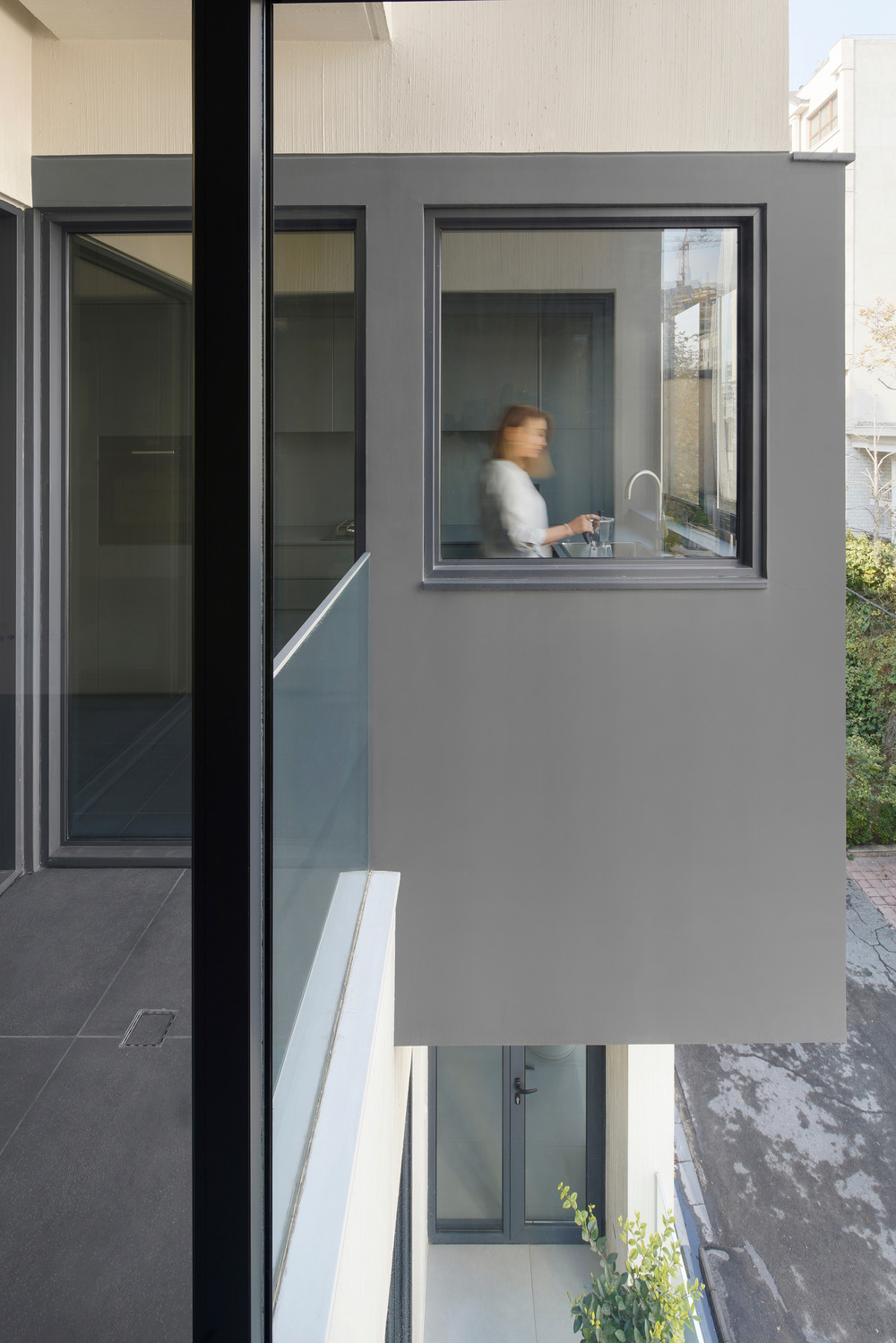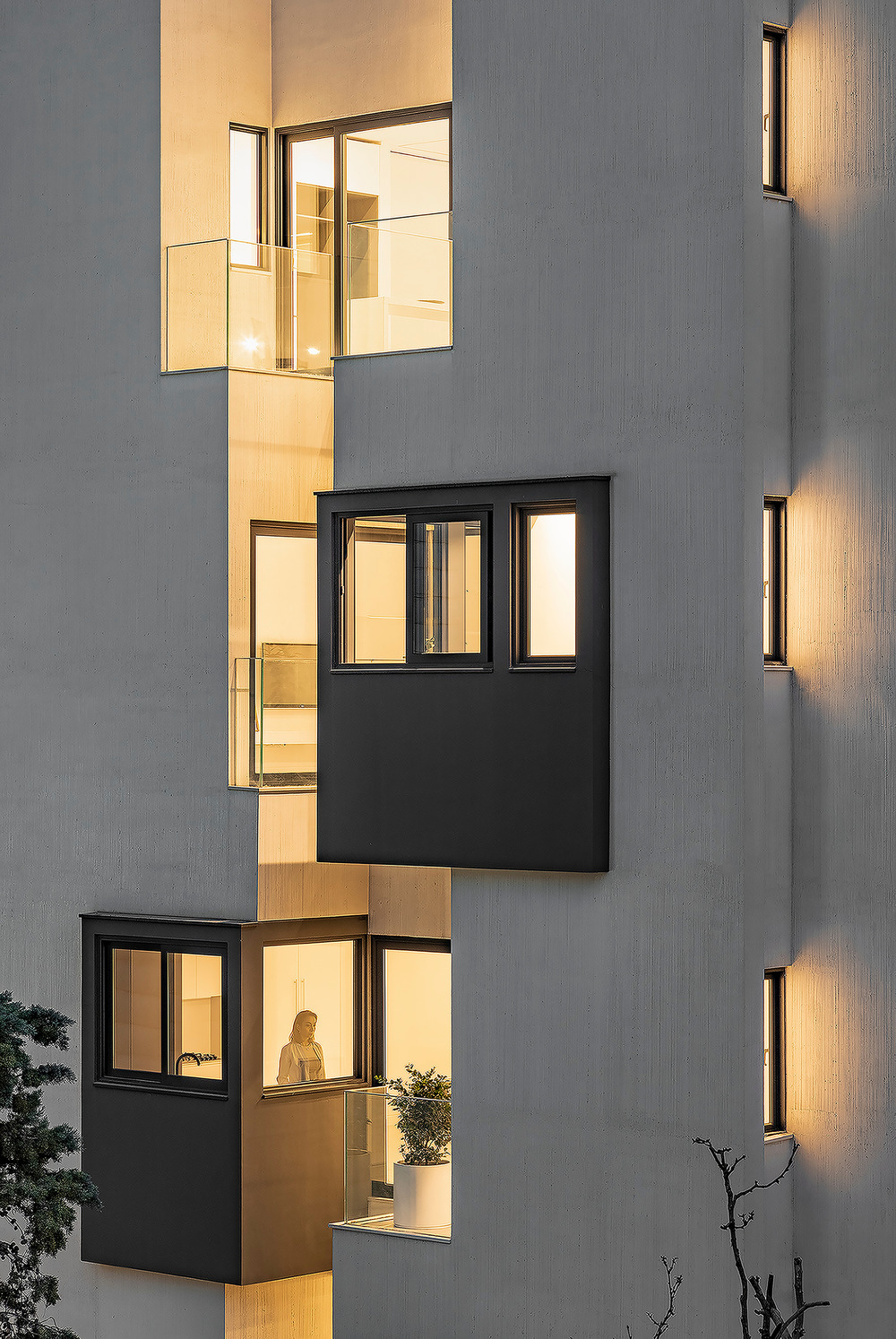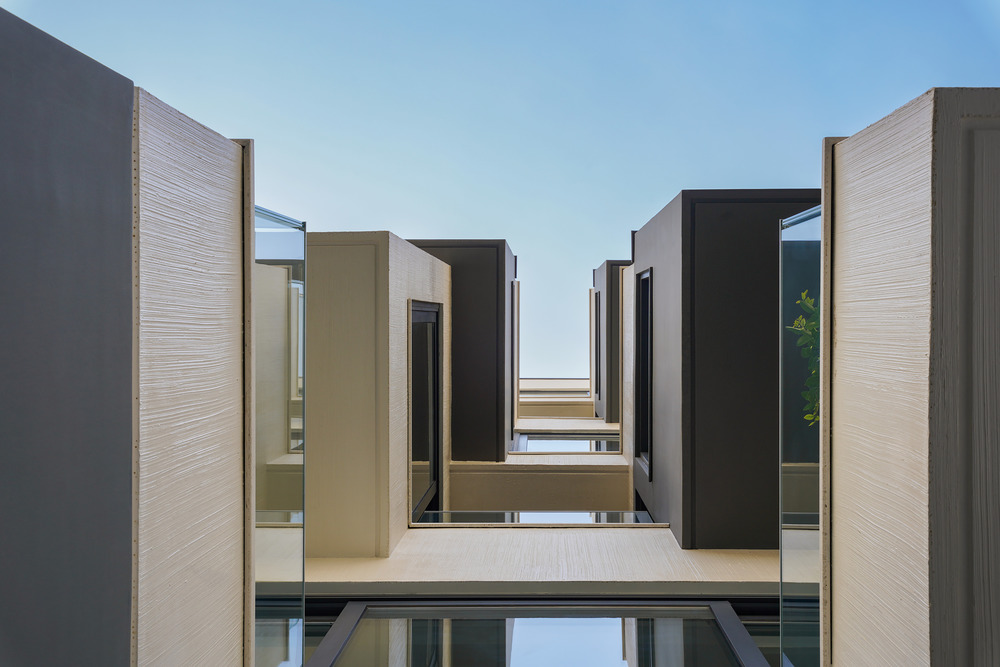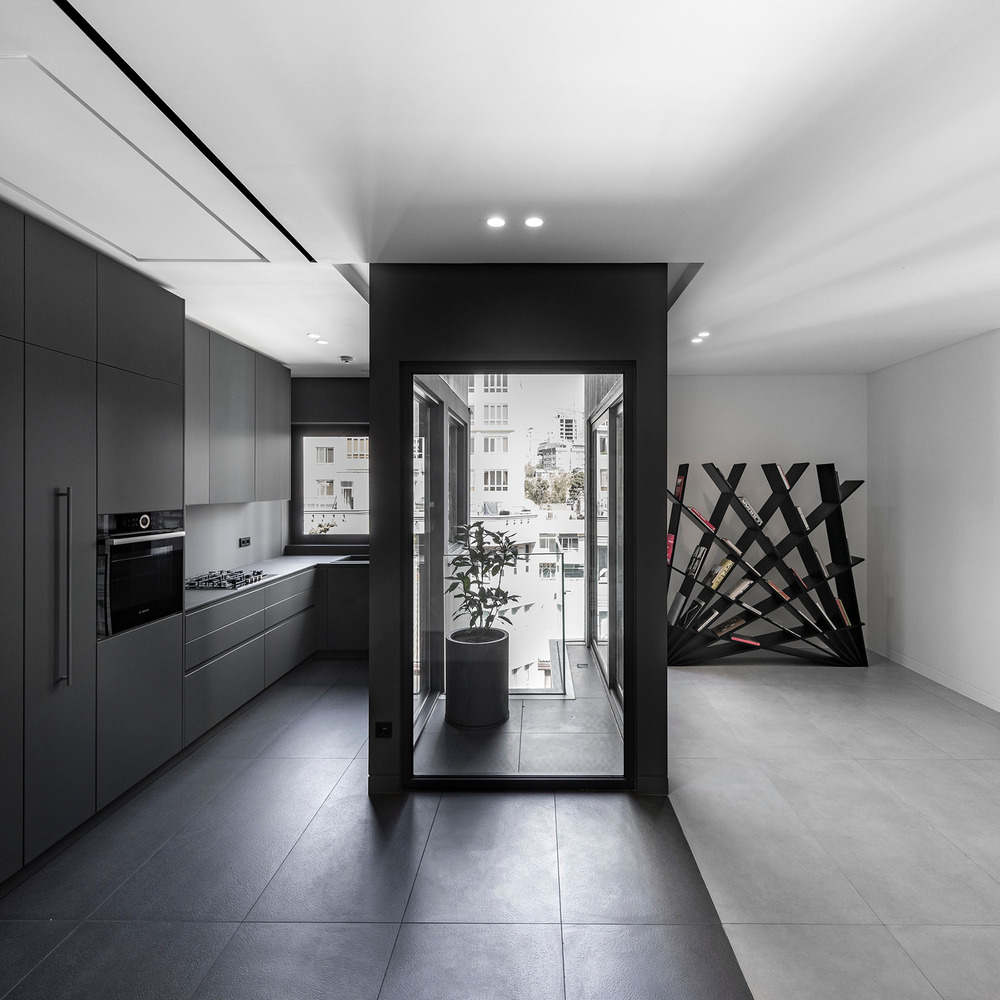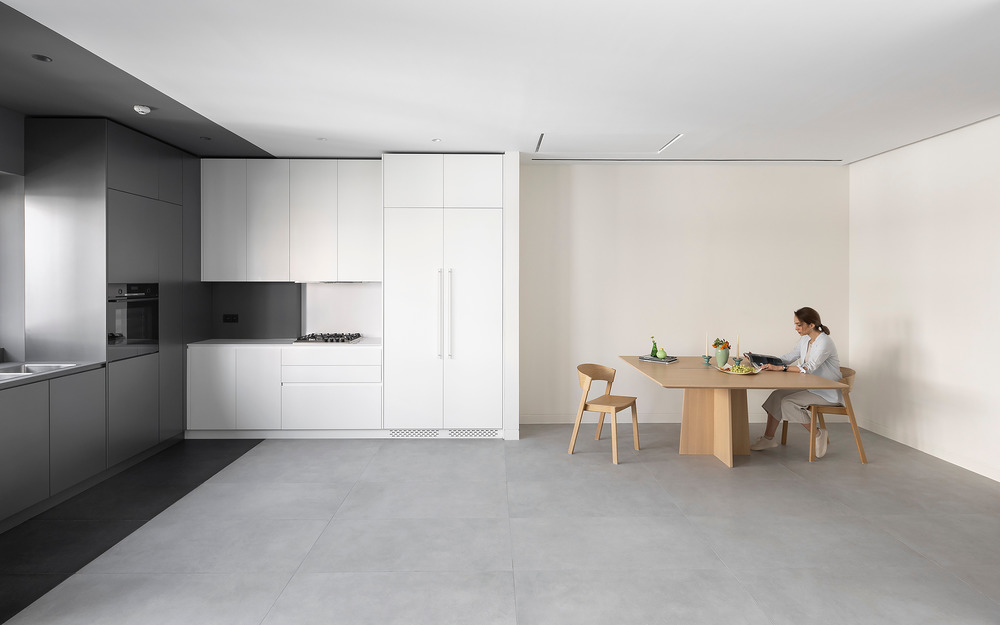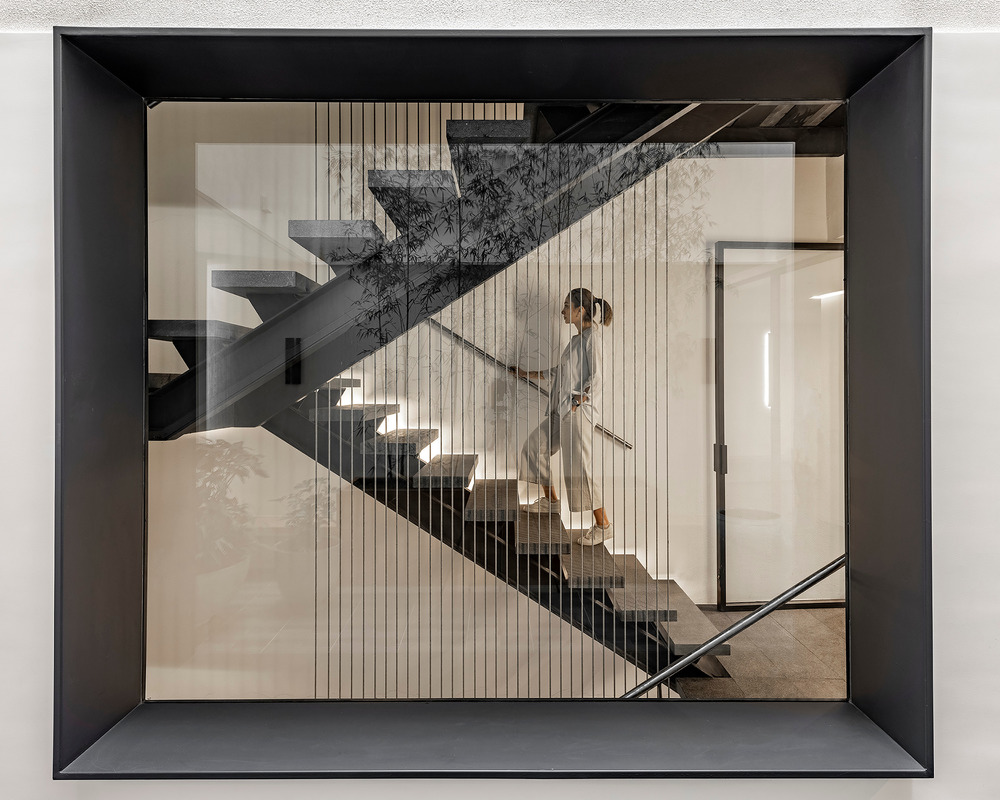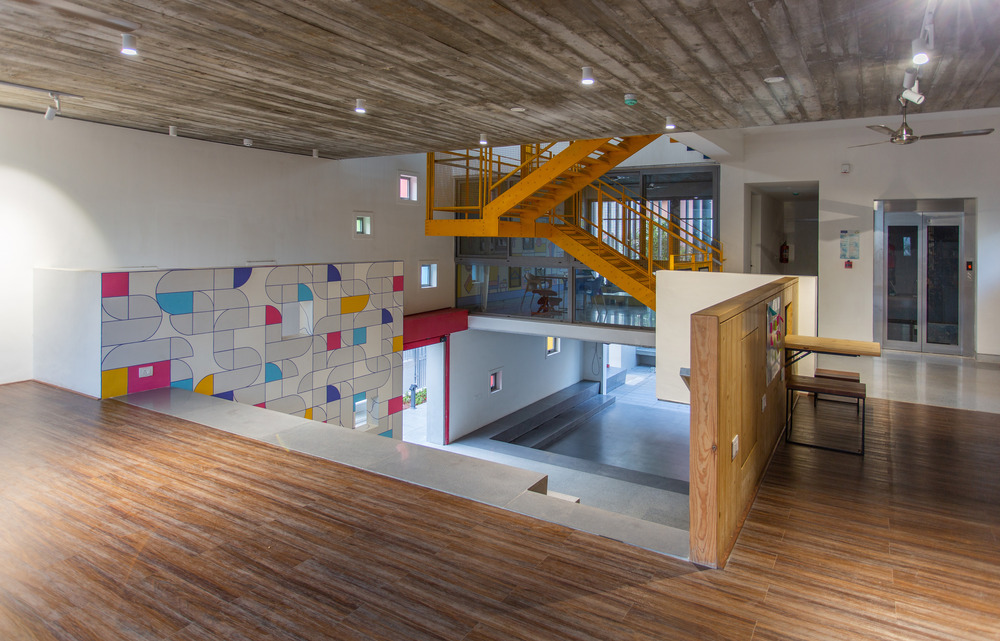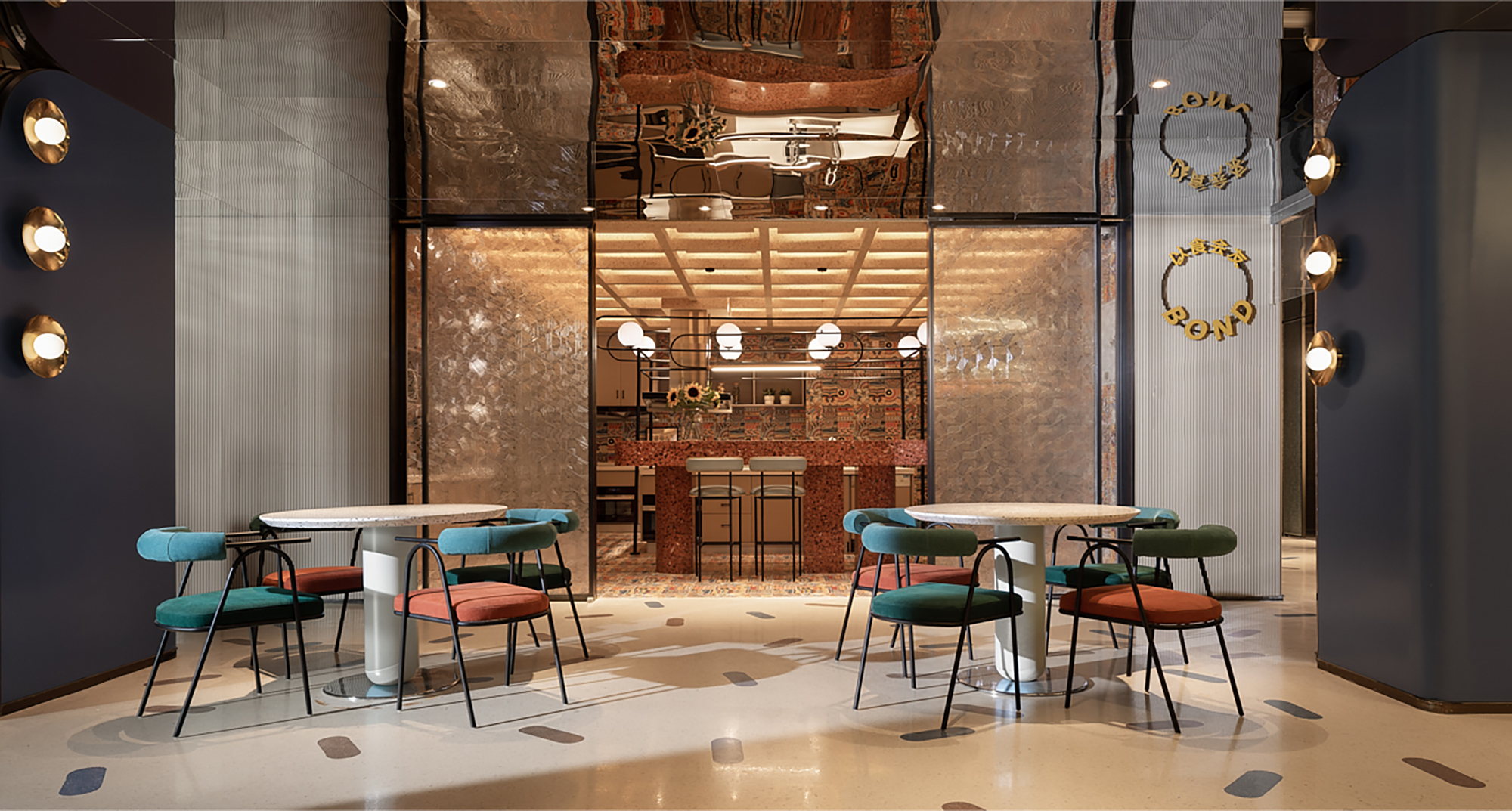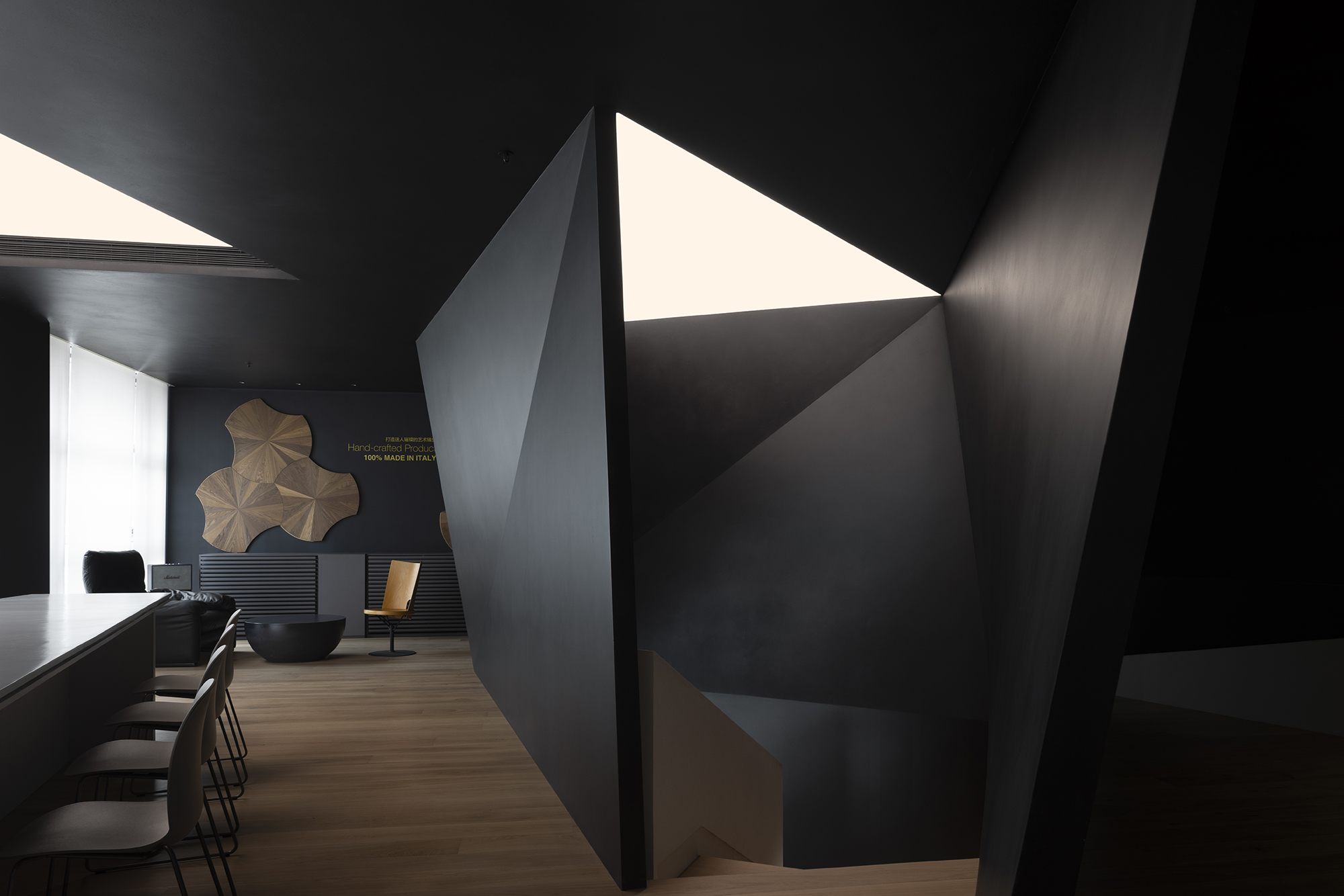Tehran has undergone tremendous reconstruction over the past four decades, changing from a city of infinite gardens with single-family homes to a city of infinite apartment blocks. In a purely economically-driven construction process, the relationship between buildings and their urban fabric is lost. As memories of this place are wiped out, a metropolis with no stories left to tell takes shape. This is Tehran’s current cityscape. VOID+ is a residential scheme developed by architect Maryam Pousti.
- Photo Credit: Parham Taghioff
- Photo Credit: Parham Taghioff
The building is located in the northern part of Tehran, Iran. It strives to offer an alternative to conventional models of habitation and dense urban living, which have resulted in closed-up building envelopes that lack a dialogue with their context. Situated on an extremely narrow site, VOID+ consists of 10 units on five floors. An intimate void that has been purposefully carved into the north façade of the building in an effort to engage it with its peripheral is the project’s most noticeable feature. The massing of the void creates a vertical flow between the skyline of the building and its feet.
- Photo Credit: Parham Taghioff
- Photo Credit: Parham Taghioff
The main entrance is defined by the particular moment when the verticality of the void turns into a horizontal plane stretched 20 metres along the length of the building. The back garden is connected to the street level by this horizontal platform. The aim is to redefine the building’s territory and assimilate a single-family house that blends seamlessly with its surroundings without the interference of rigid borders.
- Photo Credit: Parham Taghioff
- Photo Credit: Parham Taghioff
The building’s internal layouts demonstrate a strong structural and volumetric relationship to the façade; this vocabulary is used throughout the project. The juxtaposed volumes of the void offer playfulness through shifting perspectives and views, allowing the interior and exterior boundaries to be experienced simultaneously. The interaction of solids and emptiness creates a game of hide-and-seek between, within and outside that test ideas of exposure and privacy.
There are two units on each floor; rendering noise and privacy as driving forces in the positioning of a rectangular stairwell, which acts as a buffer to prevent sound and direct visual contact between the units. Each unit sits around an intimate balcony, which is perceived as an interior garden.
- Photo Credit: Parham Taghioff
- Photo Credit: Parham Taghioff
- Photo Credit: Parham Taghioff
- Photo Credit: Parham Taghioff
- Photo Credit: Parham Taghioff
A hierarchy of finishes and textures, as well as a set order for the materials, honours the importance of working with artisans. This is evident in the combed horizontal cement pattern of the façade, which also acts as a conductor of rainwater, keeping the building skin clean. Door handles, railings, lighting fixtures, and cabinets have been skilfully integrated into the architectural detailing of the building. Collaboration with makers of different backgrounds in this project is a reminder that buildings are the product of intense engagement and dedication.



